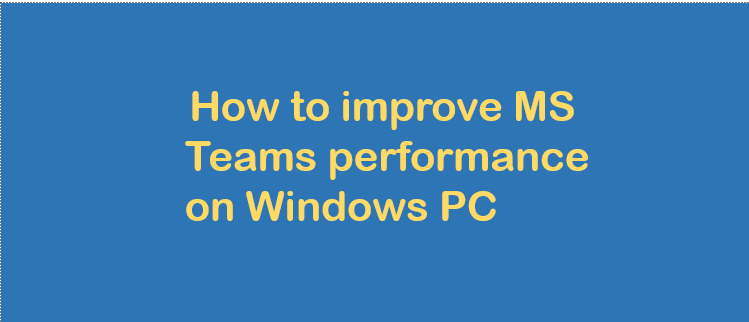Cisco AnyConnect download Windows 10: Ultimate IT Guide
Discover the ins and outs of Cisco AnyConnect download Windows 10. Secure your remote access with expert advice on setup, features, and best practices.
Introduction – Cisco AnyConnect download Windows 10
In today’s interconnected world, secure remote access to corporate networks is no longer a luxury—it’s a necessity. For IT users navigating the complexities of virtual private networks (VPNs), Cisco AnyConnect stands out as a beacon of reliability and security. This comprehensive guide will walk you through everything you need to know about Cisco AnyConnect download for Windows 10, from eligibility and installation to troubleshooting and best practices.
Whether you’re an IT professional managing a fleet of devices or an end-user looking to connect securely to your organization’s network, this article will equip you with the knowledge to harness the full power of Cisco AnyConnect on your Windows 10 system.
What is Cisco AnyConnect?
Cisco AnyConnect Secure Mobility Client is a versatile VPN platform that provides secure access to an organization’s network resources. It enables remote users to work as if they were directly connected to their corporate network, ensuring productivity and security go hand in hand.
Key Benefits:
- Secure remote access from any location
- Support for various security modules
- Seamless roaming between networks
- Consistent user experience across devices

Eligibility for Cisco AnyConnect
Before diving into the download process, it’s crucial to understand who can access Cisco AnyConnect:
- Organizations: Enterprises and educational institutions that have purchased the necessary licensing from Cisco.
- Employees: Staff members of organizations that have deployed Cisco AnyConnect.
- Students: Those enrolled in universities that offer AnyConnect for campus network access.
- IT Professionals: Administrators managing network security for their organizations.
Note: Cisco AnyConnect is not available for personal use. A valid license and proper credentials from your organization are required.
System Requirements for Windows 10
To ensure a smooth Cisco AnyConnect download and installation on Windows 10, your system should meet the following requirements:
| Component | Minimum Requirement |
|---|---|
| Operating System | Windows 10 (32-bit or 64-bit) |
| Processor | Pentium class processor or better |
| RAM | 512 MB or more |
| Hard Drive Space | 50 MB free space (minimum) |
| Permissions | Administrator privileges for installation |
It’s also recommended to have the latest Windows updates installed for optimal performance and compatibility.
Downloading Cisco AnyConnect
Follow these steps to download Cisco AnyConnect for Windows 10:
- Visit the official Cisco software download page.
- Log in with your Cisco account credentials (provided by your organization).
- Search for “AnyConnect Secure Mobility Client v4.x” (or the latest version).
- Select the “AnyConnect Pre-Deployment Package (Windows)” option.
- Read and accept the End User License Agreement.
- Click the download button to start the process.
Tip: If you don’t have direct access to Cisco’s download page, contact your IT department for the appropriate installation files.
Installation Process
Once you’ve completed the Cisco AnyConnect download for Windows 10, follow these steps to install:
- Locate the downloaded installer file (usually in your Downloads folder).
- Right-click the file and select “Run as administrator” to ensure proper installation.
- If prompted by User Account Control, click “Yes” to allow the installer to make changes.
- Follow the installation wizard:
- Click “Next” on the welcome screen.
- Accept the Software License Agreement.
- Choose the components you wish to install (VPN, Network Access Manager, etc.).
- Select the installation location (default is recommended).
- Click “Install” to begin the process.
- Wait for the installation to complete.
- Click “Finish” to exit the Setup Wizard.

Initial Configuration
After installation, you’ll need to configure Cisco AnyConnect for first use:
- Launch Cisco AnyConnect Secure Mobility Client from the Start Menu.
- Enter your organization’s VPN server address (e.g., “vpn.company.com”).
- If prompted, import any specific VPN profiles provided by your IT department.
- Configure additional security settings as required by your organization.
Connecting to VPN
To establish a secure VPN connection using Cisco AnyConnect:
- Open the Cisco AnyConnect client.
- Select the VPN server address you configured.
- Click “Connect”.
- Enter your login credentials when prompted.
- If multi-factor authentication is enabled, complete the additional verification step.
- Once connected, you’ll see a confirmation message and the AnyConnect icon in your system tray will turn green.
To disconnect, simply click the “Disconnect” button in the AnyConnect client or right-click the system tray icon and select “Disconnect”.
Key Features of Cisco AnyConnect
Cisco AnyConnect offers a robust set of features for secure remote access:
- Always-On VPN: Automatically establishes a VPN connection whenever internet connectivity is detected.
- Split Tunneling: Allows some traffic to go directly to the internet while routing other traffic through the VPN.
- Trusted Network Detection: Automatically disconnects when on trusted networks (e.g., in the office).
- Posture Assessment: Checks endpoint security status before allowing connection.
- Multi-factor Authentication: Supports various authentication methods for enhanced security.
- Mobile Support: Extends secure connectivity to iOS and Android devices.
Troubleshooting Common Issues
Even with a smooth Cisco AnyConnect download and installation on Windows 10, you may encounter some issues. Here are solutions to common problems:
- Connection Failures:
- Check your internet connection.
- Verify the VPN server address.
- Ensure your credentials are correct and not expired.
- Slow Performance:
- Try disabling split-tunneling.
- Contact IT for bandwidth allocation adjustments.
- Software Conflicts:
- Temporarily disable firewall or antivirus software to isolate the issue.
- Check for conflicts with other VPN clients.
- “Unable to Establish VPN” Error:
- Restart the Cisco AnyConnect VPN Agent service.
- Reinstall the AnyConnect client.
- Certificate Errors:
- Ensure your system time and date are correct.
- Import any necessary certificates provided by your IT department.
Security Best Practices
To maximize the security benefits of Cisco AnyConnect:
- Keep AnyConnect updated to the latest version.
- Use strong, unique passwords for VPN authentication.
- Enable multi-factor authentication if available.
- Be cautious when using public Wi-Fi, even with VPN active.
- Log out of the VPN when not in use.
- Follow your organization’s security policies and guidelines.
Updating Cisco AnyConnect
Keeping Cisco AnyConnect up-to-date is crucial for security and performance:
- Open the Cisco AnyConnect client.
- Go to the “Settings” or “Preferences” menu.
- Look for an “Update” or “Check for Updates” option.
- If an update is available, follow the prompts to install it.
Note: Some organizations manage updates centrally. If you can’t update manually, contact your IT department.
Alternatives to Cisco AnyConnect
While Cisco AnyConnect is a popular choice, other VPN solutions for Windows 10 include:
- OpenVPN
- Pulse Secure
- FortiClient
- GlobalProtect
- Microsoft’s built-in VPN client
Each has its pros and cons, so consult with your IT department to determine the best fit for your organization.

Key Takeaways
- Cisco AnyConnect provides secure remote access for organizations using Windows 10.
- A valid license and organizational credentials are required for download and use.
- The installation process is straightforward, but may require IT support in some cases.
- Regular updates and following security best practices are crucial for optimal performance and protection.
- Troubleshooting common issues often involves checking connections, credentials, and software conflicts.
FAQ
- Q: Can I use Cisco AnyConnect for personal use on Windows 10?
A: No, Cisco AnyConnect is designed for organizational use and requires a valid license from Cisco. - Q: How do I know if my Windows 10 system is compatible with Cisco AnyConnect?
A: Check the system requirements listed earlier in this guide. Most modern Windows 10 systems meet these requirements. - Q: Can I use Cisco AnyConnect on other operating systems besides Windows 10?
A: Yes, Cisco AnyConnect supports various operating systems, including macOS, Linux, iOS, and Android. - Q: Is Cisco AnyConnect free to download?
A: While the download itself may be free, you need a valid license from Cisco to use the software, typically provided through your organization. - Q: How often should I update Cisco AnyConnect on my Windows 10 system?
A: It’s best to update whenever a new version is available. Many organizations manage updates automatically. - Q: Can I use Cisco AnyConnect with other VPN clients installed on my Windows 10 system?
A: It’s generally not recommended to use multiple VPN clients simultaneously as it can cause conflicts. Consult your IT department for guidance. - Q: How secure is Cisco AnyConnect compared to other VPN solutions?
A: Cisco AnyConnect is considered highly secure, offering features like encryption, multi-factor authentication, and posture assessment. - Q: What should I do if I forget my Cisco AnyConnect password?
A: Contact your organization’s IT support or help desk for assistance with password resets. - Q: Can I customize the Cisco AnyConnect interface on Windows 10?
A: Some customization options may be available, but they are often controlled by your organization’s IT policies. - Q: Does using Cisco AnyConnect affect my Windows 10 system’s performance?
A: While any VPN may have some impact on performance, Cisco AnyConnect is designed to minimize this. If you notice significant slowdowns, contact your IT support.
Remember, your organization’s specific policies and configurations may affect how you use Cisco AnyConnect on Windows 10. Always follow your IT department’s guidelines and reach out to them for support with any VPN-related issues or questions.
Related Posts:
- Cybersecurity and Online Privacy
- Surfshark VPN Download for PC: Your Ultimate Guide for Online Privacy
Further Information:






